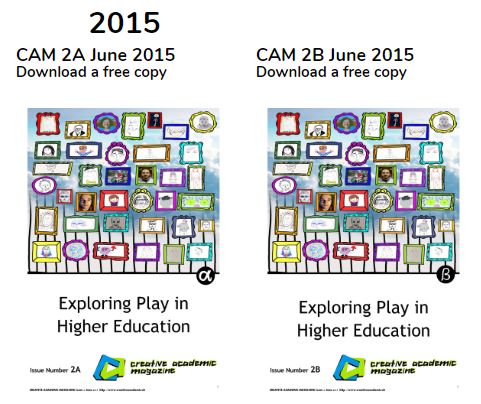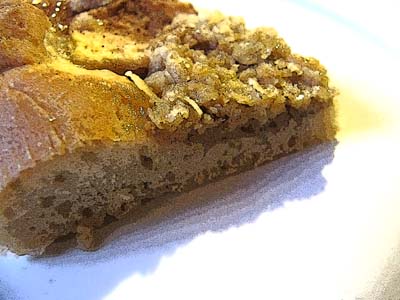We have received notification that our edited book with Prof. Alison James is now in production. Alison and I have, and also all contributors, worked on this for a long time now and it is amazing that we are almost there now. We even have a flyer!!! See below 😉

It all started when I first met Alison back in 2013 at the annual SEDA conference and our love for playful learning united us. We stayed in touch and our professional relationship developed into a deeper friendship. We created opportunities to do some work together over the years and got the opportunity to co-edit a Creative Academic Magazine issue thanks to Prof. Norman Jackson who entrusted us to explore the use of play in higher education. We couldn’t believe how many people contacted us and how many contributions we received… so many that we decided to publish the issue in 2 parts…

Nerantzi, C. & James, A. (eds.) (2015) Exploring Play in Higher Education, Creative Academic Magazine, Issue 2b, June 2015, available at http://www.creativeacademic.uk/magazine.html
Nerantzi, C. & James, A. (eds.) (2015) Exploring Play in Higher Education, Creative Academic Magazine, Issue 2a, June 2015, available at http://www.creativeacademic.uk/magazine.html
These earlier explorations into play and our own practices in this area, generated ideas for an edited book at the time where play as a concept in the context of learning and teaching in higher education was still very new.
Prof. Sally Brown kindly supported us putting a book proposal together and after some time we secured a book contract with Palgrave. Thank you so much Sally for all your valuable advice and guidance. Alison and I were delighted when we got the offer but knew the hard work was all ahead of us. At that time, I was still working on my doctoral thesis… but this didn’t stop us. Our plans were ambitious and we worked systematically on the book project to bring it to fruition. We were hoping to get contributions from practitioners from different disciplines and professional areas as well as from different parts of the world. We did and we are grateful to all colleagues who came forward and contributed to this book and made it such a rich collection. We have learnt so much through your stories.
There is still some work that needs to be done on the book. But it is now in production. We will be delighted to share the book with our contributors and the wider academic community.
 Our openly licensed booklet around the use of LEGO in Higher Education will follow and there is still the opportunity to contribute to a special issue around the use of LEGO (IJMAR). See the open call here.
Our openly licensed booklet around the use of LEGO in Higher Education will follow and there is still the opportunity to contribute to a special issue around the use of LEGO (IJMAR). See the open call here.

 So, what is in the booklet? After an introduction into the LSP method and its potential uses in higher education, a series of short LSP stories follows. These stories showcase how specific practitioners from a range of disciplines and professional areas currently use LSP in an higher education context. I would like to thank the following colleagues for making the time to contribute their LSP story to the collection: Dr Stephen Powell, Neil Withnell, Sue Watling, Prof. Alison James, Graham Barton, Lesley Raven, Prof. Dr Tobias Seibl, Dr Thanassis Spyriadis, Dr Sean McCusker, Lisa Higgings, Haleh Moravej, Prof. Rebecca Lawthom, Sue Beckingham and Dr Catherine Hayes. Also a big thank you to Alison Laithwaite, Dr Gayle Impey, Dr Maren Deepwell and Tom Palmer for commenting on specific LSP activity sets.
So, what is in the booklet? After an introduction into the LSP method and its potential uses in higher education, a series of short LSP stories follows. These stories showcase how specific practitioners from a range of disciplines and professional areas currently use LSP in an higher education context. I would like to thank the following colleagues for making the time to contribute their LSP story to the collection: Dr Stephen Powell, Neil Withnell, Sue Watling, Prof. Alison James, Graham Barton, Lesley Raven, Prof. Dr Tobias Seibl, Dr Thanassis Spyriadis, Dr Sean McCusker, Lisa Higgings, Haleh Moravej, Prof. Rebecca Lawthom, Sue Beckingham and Dr Catherine Hayes. Also a big thank you to Alison Laithwaite, Dr Gayle Impey, Dr Maren Deepwell and Tom Palmer for commenting on specific LSP activity sets.



You must be logged in to post a comment.